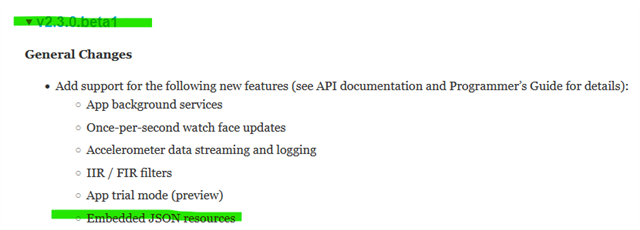1. There is no documentation only one example...
2. It's from 2.3 CIQ but for all device?
3. How it works?
- what is returned from loadResource(resourceId_jsonres)? dictionary?
- memory usage. After loading json_res in function to local var is memory released after exiting from func? or happens something like with string_res - memory is occupied until app exit?


